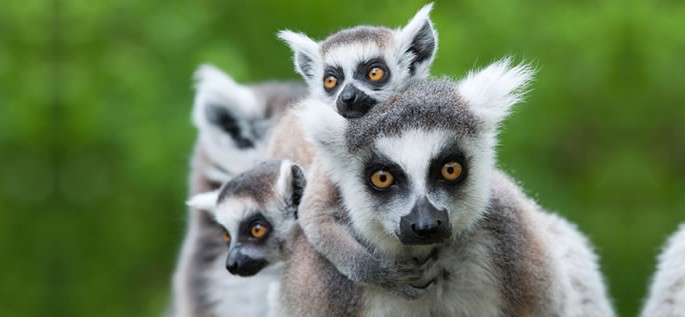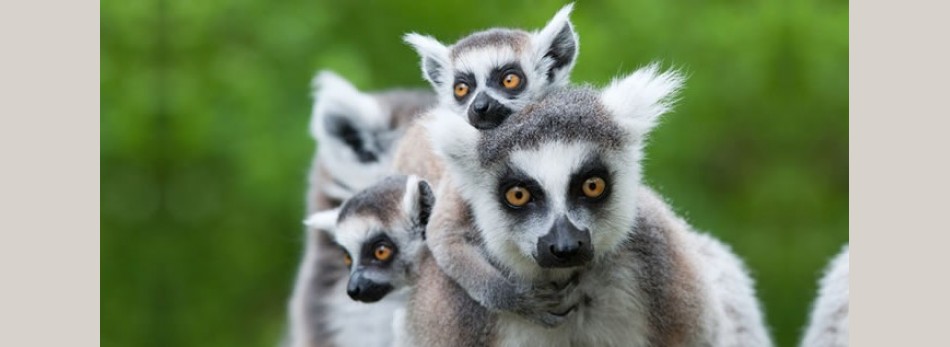Malagasy

Malagasy is spoken on the island of Madagascar, off the east coast of Africa. Despite its close proximity to Africa, however, Malagasy is not a member of any African language family. Rather, it is a group of closely related varieties representing the westernmost extension of the Malayo-Polynesian branch of the Austronesian language family. Its closest relative outside of Madagascar is Ma’anyan in southeast Borneo. The indigenous people of Madagascar, who make up some 36 tribes and are of mixed Indonesian and African stock, are also known as Malagasy.
Africans and Indonesians reached the island of Madagascar in about the 5th century AD. Indonesians most probably came from southeast Borneo where close relatives of Malagasy, such as Ma’anyan, are still spoken today. The Malagasy immigrants came in contact with settlers from the east coast of Africa who spoke Bantu languages. As a result, Malagasy exhibits Bantu influence in its sound system and vocabulary. Indonesian immigration continuing until the 15th century. By the beginning of the 17th century there were a number of small Malagasy kingdoms. At the end of the 18th century, the Merina people conquered the other kingdoms on the island. In the 19th century, European missionaries codified and recorded the main Merina dialect on which the present standard dialect is based.
Malagasy is one of the official languages of Madagascar which became the Malagasy Republic in 1960. The other official language is French. The language is spoken by most of the island’s 22 million inhabitants. It is also spoken in the Comoros and Réunion islands east of Madagascar. During the French colonization of Madagascar, French became the dominant language of the island, while Malagasy was relegated to an inferior position. Today, French remains important, largely because of its international status and the fact that most of Malagasy’s elite has been educated in French. Both Malagasy and French are used in everyday communication, official government publications, in the media, and in education. Many residents of urban centers are bilingual in Malagasy and French.
Dialects
Ethnologue lists a dozen varieties of Malagasy. There are two principal dialect groups: eastern, and western. The geographic division between the two runs along the spine of the island. The Merina dialect is considered the national language of Madagascar. The dialects are characterized by a high degree of lexical similarity.
Structure
The basic structure of Malagasy syllables is Consonant + Vowel. Consonant clusters, consisting moslyt of Consonant + /r/, occur only at the beginning of syllables.
Vowels
Malagasy has five vowel phonemes, i.e., sounds that make a difference in word meaning.
|
Front
|
Central
|
Back
|
|
|---|---|---|---|
| Open |
i
|
cxxx
|
u
|
| Mid |
e
|
o
|
|
| Close |
a
|
Consonants
Malagasy has 20 consonant phonemes, i.e., sounds that differentiate word meaning. Stops and affricates can be prenasalized, a feature typical of the Bantu languages, spoken by settlers from the east coast of Africa. In addition, Malagasy has several retroflex consonants that are produced with the tip of the tongue curled so that its underside comes in contact with the palate.
|
Bilabial
|
Labio-dental |
Dental
|
Alveolar |
Postalveolar
|
Retroflex |
Velar
|
Glottal
|
||
|---|---|---|---|---|---|---|---|---|---|
| Stops | voiceless plain |
p
|
t
|
k
|
ʔ
|
||||
| voicelessprenasalized |
ᵐp
|
ᵑt
|
ᵑk
|
||||||
| voiced plain |
b
|
d
|
xx | ….xxx |
g
|
||||
| voiced prenasalized |
ᵐb
|
ᵑd
|
ᵑg
|
||||||
| Affricates | voiceless plain | xxx |
ts
|
tʃ
|
ʈʂ
|
xxx | |||
| voiceless prenasalized |
ᵑts
|
ᵑtʃ
|
ᶯʈʂ
|
||||||
| voiced plain |
dz
|
dʒ
|
ɖʐ
|
||||||
| voiced prenasalized |
ᵑdz
|
ᵑdʒ
|
ᶯɖʐ
|
||||||
| Fricatives | voiceless |
f
|
s
|
h
|
|||||
| voiced |
v
|
z
|
|||||||
| Nasals |
m
|
n
|
|||||||
| Laterals |
l
|
||||||||
| Tap or trill |
r
|
||||||||
- /ʔ/ = sound between vowels in uh-oh
- /tʃ / = ch in chop
- /dʒ/ = j in job
Stress
Stress usually falls on the penultimate syllable of a word, with the exception of words that end in -ka, -tra, or –na. Unstressed vowels are often elided, e.g., the word Malagasy, with accent on the syllable –ga-, is pronounced as [malgas].
Malagasy is an agglutinative language, i.e., words are formed by attaching prefixes or suffixes to roots to create derivatives. Malagasy words can be very long, e.g., Andrianampoinimerina, the name of a king. Like all Malayo-Polynesian languages, Malagasy also uses reduplication to mark grammatical relations.
Nouns
- Malagasy nouns are not marked for gender, number, or case.
- The genitive is formed by inserting a possessive marker between the possessed noun and the possessor.
- Definiteness is expressed by the definite determiner ny which precedes the noun.
Pronouns
- Pronouns are marked for three cases: nominative, accusative and genitive.
- Some pronouns and demonstratives have a plural marker re.
- There is an elaborate system of six demonstratives signalling varying degrees of distance between speaker and modified noun.
- The first person plural pronouns have an exclusive form that excludesthe addressee, and an inclusive form that includes the addressee.
Verbs
The verb system of Malagasy is quite complex. Most verbs are formed by attaching prefixes to roots.
- There are three tenses: present, past and future. They are marked by prefixes.
- Malagasy has a complex voice system featuring verbal arguments such as actor, object, beneficiary, instrument, etc., that can be promoted to the subject position. This is reflected in both the word order and in the structure of the verb itself. For instance, when the actor is promoted to the subject position, the verb is marked with the prefixes, an-, i-, or a-. When the object is promoted to the subject position, the verb is marked with the suffix -in.
- Negation is expressed by the particle tsy placed before the verb.
- Yes-no questions are expressed by the particle ve placed before the verb.
Word order
- The most common word order in Malagasy is Verb-Object-Subject, but other word orders are possible if emphasis on other elements of the sentence is needed. Focus is marked by particles and by placement of the focused word at the beginning of a sentence.
- Definite markers precede the noun they modify, while adjectives, numerals, quantifiers, and relative clauses follow it.
- Adverbs and some quantifiers precede the verb.
Malagasy shares much of its basic vocabulary with Ma’anyan, a language spoken in southern Borneo. This is because the island was first settled from about 1,500 to 2,000 years ago by Indonesians, probably mostly from Borneo. The original Indonesian settlers later mixed with East Africans and Arabs, among others. As a result, Malagasy has many loanwords from Arabic, e.g., names of the days of the week and months of the year, and Swahili, e.g., names of animals. A number of French and English words also entered the language in the last two centuries. The first known Vocabulaire Anglais-Malagasy was published in 1729. A Malagasy-English Dictionary was published by the London Missionary Society in 1885.
Here are some simple phrases in Malagasy:
| Hello | Manao ahoana, salama |
| Good-bye | Veloma |
| Welcome | Tonga soa |
| Excuse me, please | Azafady |
| Thank you | Misaotra |
| Yes | Eny |
| No | Tsia |
| Man | Lehilahy |
| Woman | Vehivavy |
| Book | Boky |
Malagasy numerals 1-10 are given below.
|
1
|
2
|
3
|
4
|
5
|
6
|
7
|
8
|
9
|
10
|
|---|---|---|---|---|---|---|---|---|---|
|
ray
|
roa
|
telo
|
efatra
|
dimy
|
enina
|
fito
|
valo
|
sivy
|
folo
|
Writing
The Malagasy writing system, based on the Latin alphabet, was developed by members of the London Missionary Society in 1824-25. This writing system continues to be used today. The alphabet consists of 21 letters. It is given below.
|
A a
|
B b
|
D d
|
E e
|
F f
|
G g
|
H h
|
I i
|
J j
|
K k
|
L l
|
M m
|
|
N n
|
M m
|
N n
|
O o
|
P p
|
R r
|
S s
|
T t
|
V v
|
Y y
|
Z z
|
.
|
Take a look at Article 1 of the Universal Declaration of Human Rights in Malagasy
|
ANDININY VOALOHANY Teraka afaka sy mitovy zo sy fahamendrehana ny olombelona rehetra. Samy manan-tsaina sy fieritreretana ka tokony hifampitondra am- pirahalahiana. |







